iRASPA: GPU-accelated visualisation software for materials scientists
Table of Contents
Introduction
iRASPA is a GPU-accelated visualization package (with editing capabilities) aimed at material science. Examples of materials are metals, metal-oxides, ceramics, biomaterials, zeolites, clays, and metal-organic frameworks. iRASPA is available on macOS, Linux, and windows, and leverages the latest visualization technologies with high performance. iRASPA extensively utilizes GPU computing. For example, void-fractions and surface areas can be computed in a fraction of a second for small/medium structures and in a few seconds for very large unit cells. It can handle large structures (hundreds of thousands of atoms), including ambient occlusion, with high frame rates.
iRASPA has been created by David Dubbeldam (University of Amsterdam, The Netherlands), Sofia Calero (Universidad Pablo de Olavide, Seville, Spain) and Thijs Vlugt (Delft University of Technology, The Netherlands) with contributions from Randall Q. Snurr (Northwestern University, Evanston, USA) and Chung G. Yongchul (School of Chemical & Biomolecular Engineering, Busan South Korea). The MacOS version is written in Swift 4 and runs on macOS “El Capitan” and higher. The linux and windows version are based on Qt-5.15.
Via iCloud, iRASPA has access to the CoRE Metal-Organic Frameworks database containing 4764 structures and 2932 structures enhance with atomic charges. All the structures can be screened (in real-time) using user-defined predicates. The cloud structures can be queried for surface areas, void fraction, and other pore structure properties.
Main features of iRASPA are:
- structure creation and editing,
- creating high-quality pictures and movies,
- Ambient occlusion and high-dynamic range rendering,
- collage of structures,
- (transparent) adsorption surfaces,
- text-annotation,
- cell replicas and supercells,
- symmetry operations like space group and primitive cell detection,
- screening of structures using user-defined predicates,
- GPU-computation of void-fraction and surface areas in a matter of seconds.
The main interface
The main window is your primary interface for viewing, editing, and managing all the parts of your projects. It uses a master-detail interface, where changes in the primary view controller (the master project-view) drive changes in a other views.
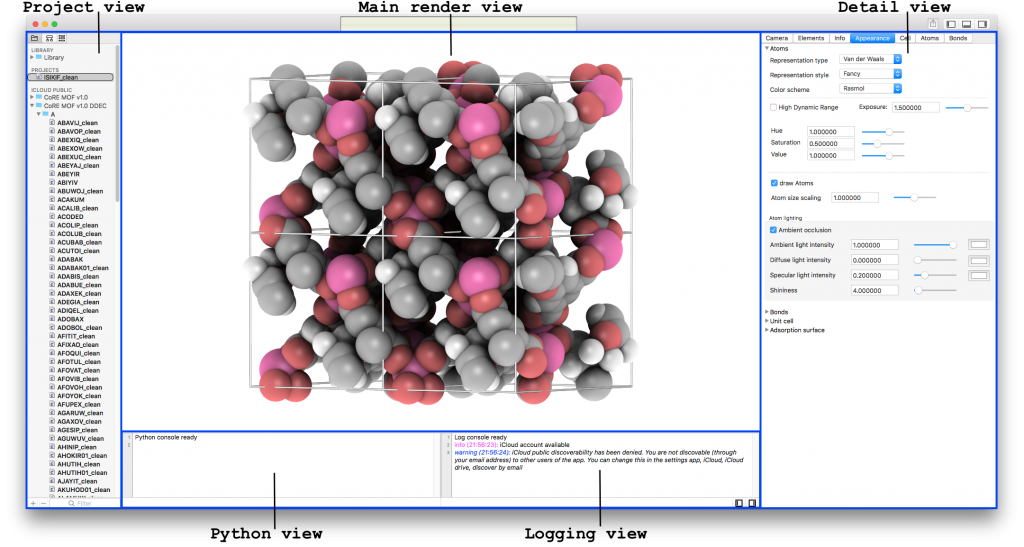
Viewing structures
Structural visualization is a tool to help users to understand the structural information. However, standard rendering techniques for fluids and crystals fail to produce visual high-level three-dimensional understanding of the structure. Ambient occlusion darkens the crevices in molecules and crystals and dramatically improves the 3-dimensional perception of the structure (see figure below)
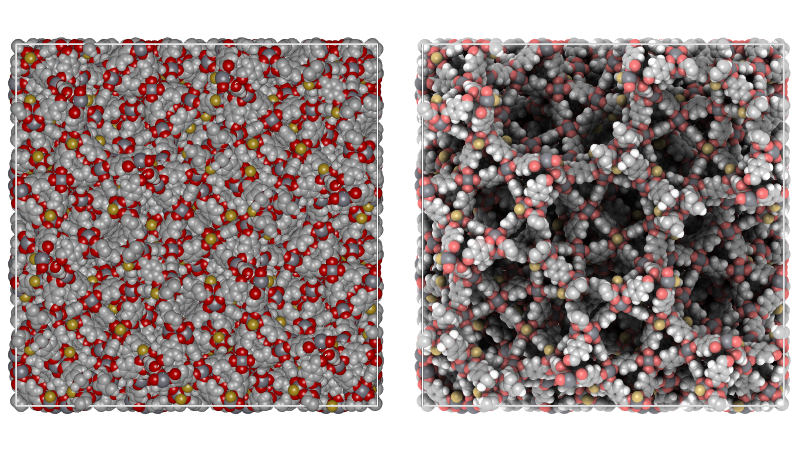
Space filling viewing modes more clearly show the available pore-volume. Ball-and-stack viewing is very suitable to highlight connectivity. In the ball-and-stick model, the atoms are represented by spheres, connected by cylinders which represent the bonds. Bonds can be internal or external when they cross periodic boundaries. iRASPA draws the external bonds as solid cylinders that are cut at the border-plane. The colors of the atoms are defined by the selected “color scheme”.
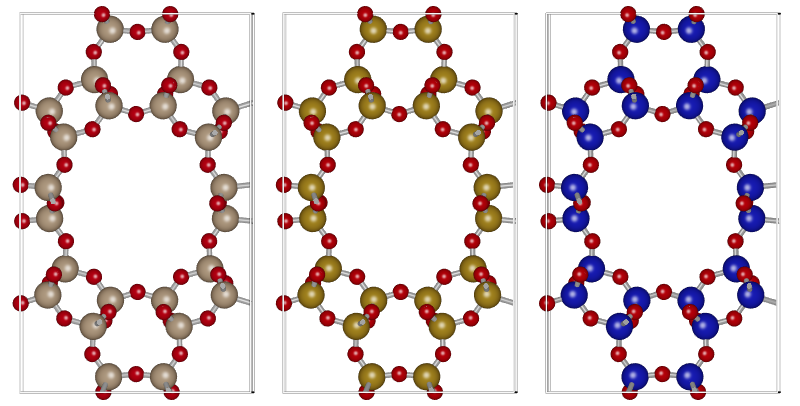
Editing structures
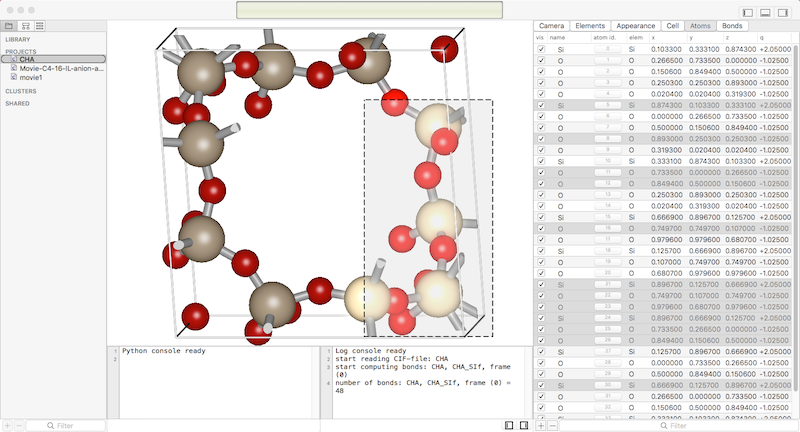
Adsorption surfaces
It is difficult to determine the connectivity, shape, and size of a channel/cage system just by examining the atomic positions of the framework. iRASPA can visualize energy contour surface and thereby obtain siting information.
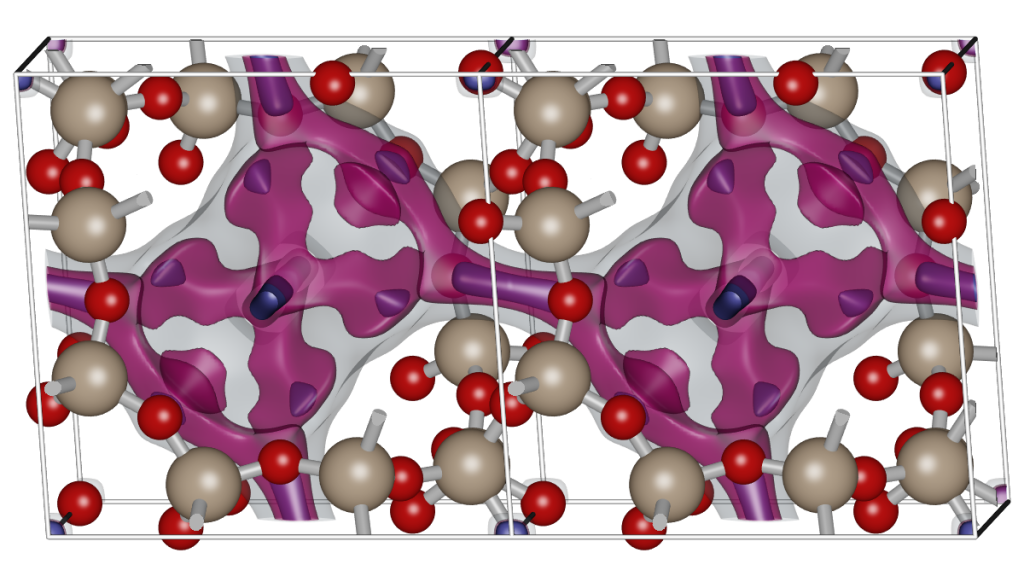
Symmetry operations
iRASPA can perform various symmetry finding operations on crystals, for example automatic spacegroup determination of atomiic structures and finding the primitve cell.
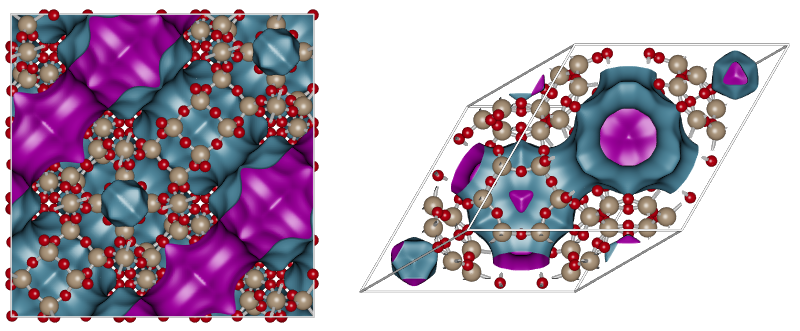
Creating pictures and movies
Making great pictures and movies really helps to enhance scientific content of presentations, teaching, and publications. Pictures can be made upto the resolution that the video-card supports, in 8- or 16-bits RGB or CYMK TIFF format. Background options include uniform colors, linear or radial gradients, and images.
Download links
| Operating system | Package type | Link |
|---|---|---|
| Linux | rpm/deb packages | https://github.com/iRASPA/iRASPA-QT/releases/latest |
| Linux | Snap | https://snapcraft.io/iraspa |
| Linux | Source | https://github.com/iRASPA/iRASPA-QT |
| Windows | Windows store | https://www.microsoft.com/en-us/p/iraspa/9p9513knh8vc |
| Windows | Source | https://github.com/iRASPA/iRASPA-QT |
| MacOS | app store | https://apps.apple.com/us/app/iraspa/id1032957936 |
| MacOS | Source | https://github.com/iRASPA/iRASPA-COCOA |
